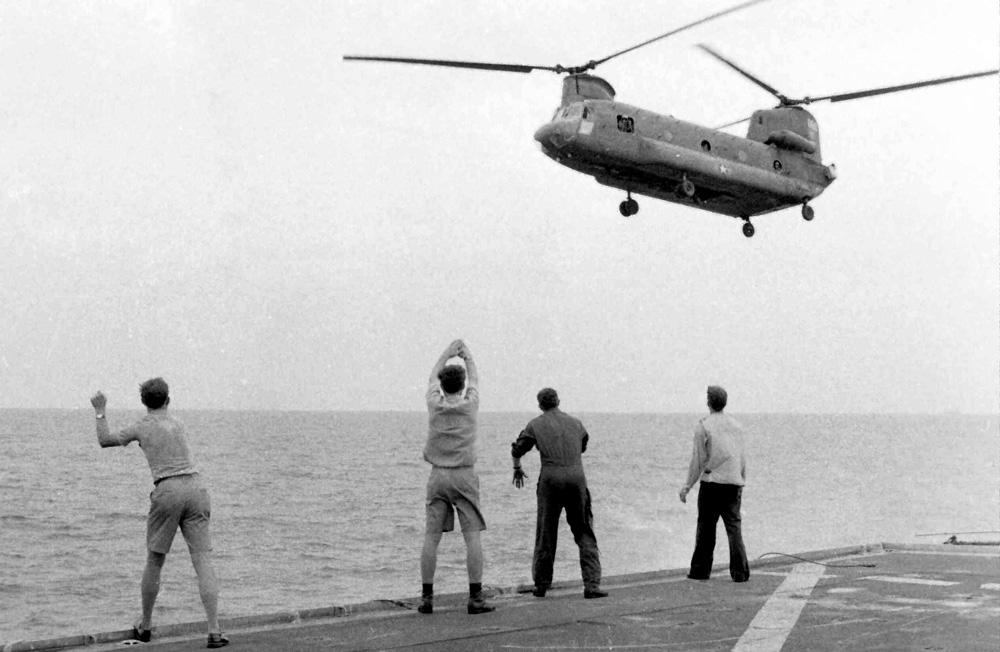The question of how you leave a war at the center of Rory Kennedy’s “Last Days in Vietnam” seems to be an especially timely one in the wake of the recent events that have brought the U.S. back into Iraq, though it’s a sad fact of life that its relevance will likely never diminish. But while the film’s grandiose title suggests a dry historical overview that couldn’t possibly encompass everything that transpired at the end of one of America’s most controversial wars, Kennedy instead finds an inspiring grace note in the story of the USS Kirk, a US naval ship whose leadership evaded official policy to help save nearly 30,000 refugees from South Vietnam who surely would’ve been killed had they stayed in the country.
Typical of Kennedy’s work to date, the filmmaker is able to gather a wide and impressive assortment of people who were involved in the rescue, from South Vietnamese college student Binh Pho to then Secretary of State Henry Kissinger. (A well-placed appearance from Richard Armitage, who would later play a key role as the Deputy Secretary of State during the Second President Bush’s Administration’s invasion of Iraq after helping organize the transportation of the 30,000 refugees from Saigon, is also able to do the heavy lifting of connecting the end of this war to others without ever overtly bringing it up.)

Such compelling footage and interviews allows “Last Days in Vietnam” to rise above its roots in the traditional documentary form, a mix of talking heads and archival clips that still manages to, in staying true to its subject, show the humanity in a situation that seems predetermined. Beyond the obviously superb efforts of archival researchers Polly Pettit, Jane E. Tucker and their entire team and editor Don Kleszy’s skill in putting it all together, the film’s capacity to offer something new about such a well-covered war is no doubt a testament to Kennedy’s ability to draw out what warmth is left in all her subjects who have been hardened by their time in combat and the need to keep reliving it. “Last Days in Vietnam” reminds that as impossibly large-scale and labyrinthian wars can become, it is still the human element that shines through, for better or worse.
“Last Days in Vietnam” opens on Sept. 19 in Los Angeles at the Nuart, Boston at Kendall Square and Philadelphia at the Ritz Bourse before expanding across the country. A full list of theaters and dates is here.




